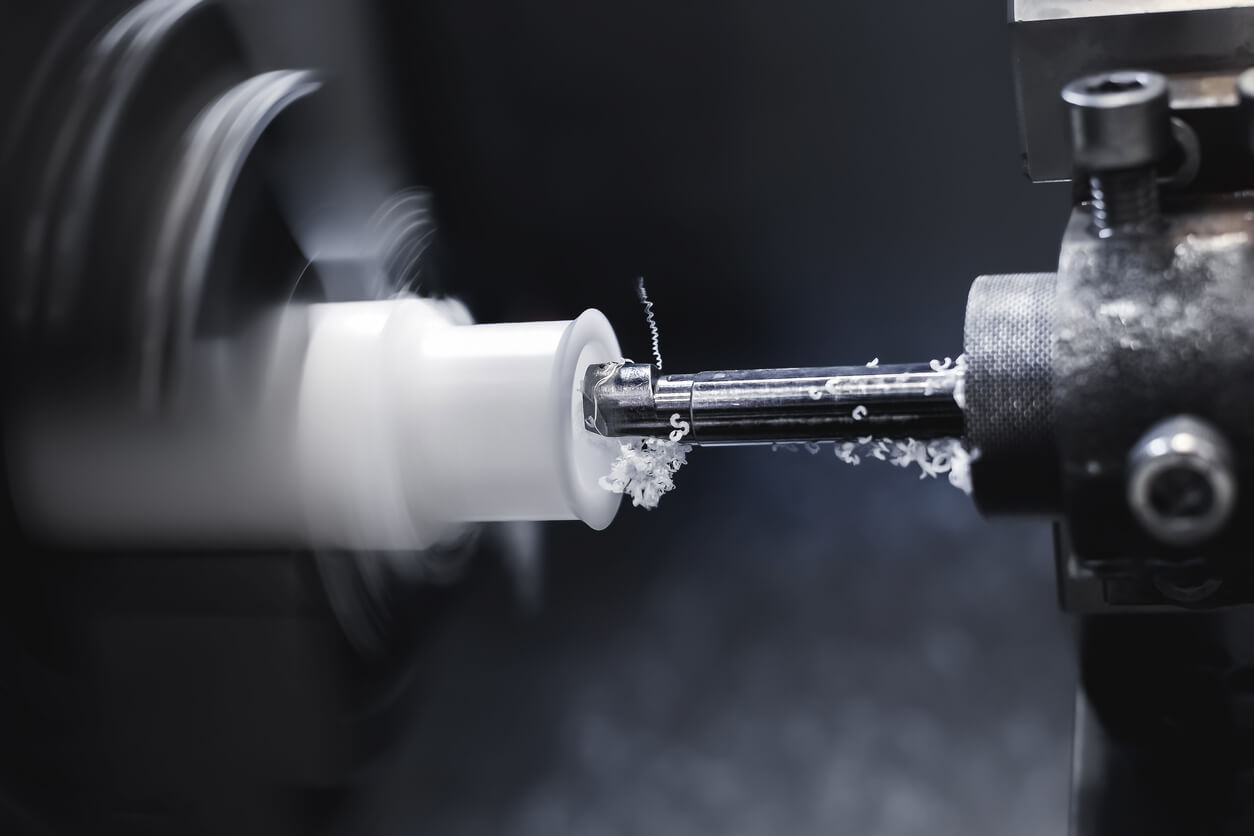Types of Plastic CNC Machining
Plastic machining is one of the most common industrial processes due to the high usage of plastic materials. However, modern plastic CNC machining is not what it used to be. Today’s plastics can be strong enough to withstand the impact of bullets. This requires very strong machining methods.
CNC machining plastics has become an excellent solution to meet these requirements. There are many types of plastics with different physical properties and chemical structures. All of these types are easy to process through CNC machining.
This article will explore the CNC machining applications of plastic materials. It will provide a detailed description of the different types of CNC machined plastic parts and their physical properties. You can decide which plastic material is best suited for your job requirements based on the information provided here.
1.What is Plastic CNC Machining?
Plastic CNC machining is a CNC machining process that utilizes computer numerical control (CNC) technology to automatically machine plastic materials. This is achieved by guiding the machine tool through computer programming.
While CNC machining technology supports a wide range of materials such as metals, alloys, glass, wood, and ceramics, this specific term refers to its application in plastic machining.
2.Can Plastics Be CNC Machined?
Yes, it is possible to CNC machine plastics. In fact, CNC machining is the best way to manufacture plastic parts. This is because the process is highly precise and fast. The quality of plastic CNC machining is far ahead of other alternatives such as injection molding or 3D printing.
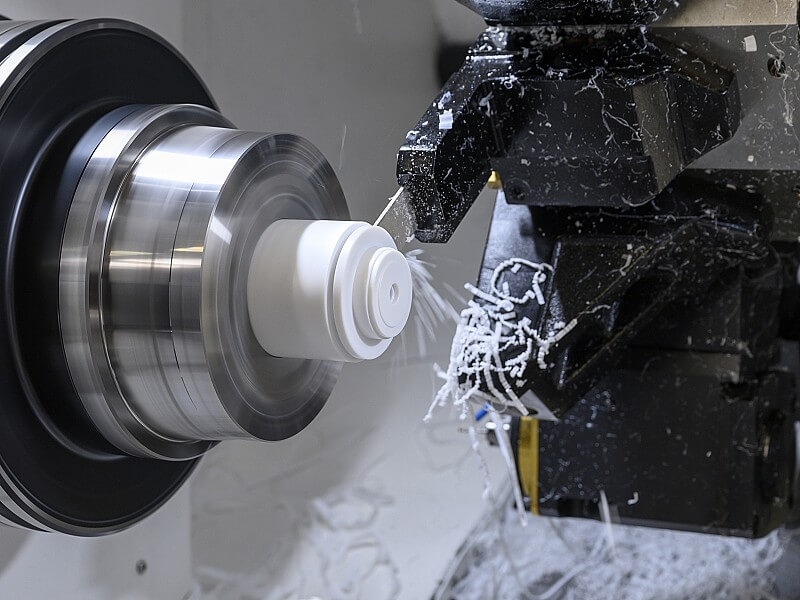
3.What are the common plastics that are CNC machined?
Any plastic can be CNC machined. Some common plastics that use this process include:
1) Nylon (PA)
Nylon has good chemical and heat resistance. Therefore, nylon is often used in applications such as insulation and jacketing. Nylon gaskets are used in circuit breakers in the electronics industry. Common processes for nylon are CNC milling machines and lathes. There are many different grades of nylon. Nylon 6/6 is a type commonly used in plastic CNC machining.
① Advantages
- Very cheap cost
- Lightweight
- High heat resistance
- No fire
- Retains color
- Durability
- Good finish
② Disadvantages
- Easy to melt at high temperature
- Hygroscopicity
③ Uses
- Clothes
- Fishing line
- Fishing net
- Conveyor belt
- Safety belt
- Parachute
- Camping equipment
2) Polyethylene (PE)
Polyethylene is also known as polyethylene. It is the most commonly used and produced type of plastic. The popularity of polyethylene has led to the emergence of several different types. The two common polyethylenes in plastic CNC processing are LDPE and HDPE.
Low-density polyethylene (LDPE): LDPE has low tensile strength, high ductility, and low density. Common applications of LDPE are in the manufacture of trays and foils for the packaging industry. It has very low hygroscopicity.
High-density polyethylene (HDPE): HDPE has better physical properties than LDPE. The main advantages of HDPE are its high density and high tensile strength. Plastic bottles and plastic tubes are made of HDPE material.
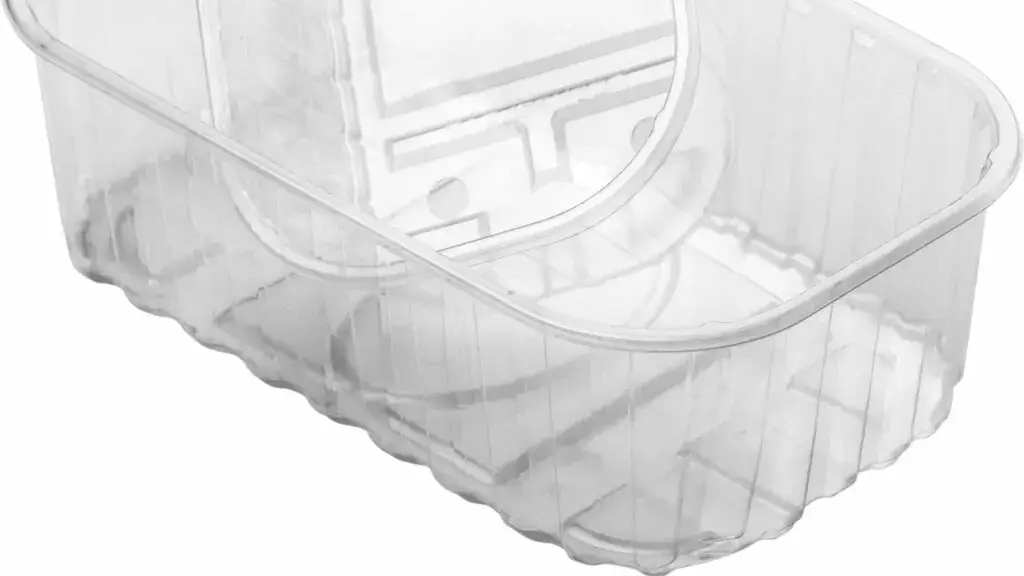
① Advantages of polyethylene
- Rich variety
- Very cheap cost
- Light
- Waterproof performance
- Flexible
② Disadvantages of polyethylene
- Harmful to the environment
- Made from fossil fuels
- Produces greenhouse gas emissions
③ Uses
- Food packaging
- Bottles
- Pipes
- Pallets
- Food bags
- Garbage bags
- Insulation materials
- Toys
3) Polyethylene terephthalate (PET)
Polyethylene terephthalate (PET) belongs to the polyester plastic material subcategory. It is the main component of packaging in the food and beverage industry. It is a hygienic, waterproof and lightweight material. It is also one of the easy-to-process plastics used in plastic CNC machining projects.
① Advantages of PET
- High strength-to-weight ratio
- Low cost
- Hygienic
- Food grade
- Recyclable
② Disadvantages of PET
- Non-biodegradable
③ Uses of PET
- Water bottles
- Jars
- Ropes
- Auto parts
- Protective packaging
4) Polyvinyl chloride (PVC)
PVC is one of the strongest and most versatile plastics. It is a very durable material with high tensile strength, light weight, and chemical resistance. PVC comes in many forms for different applications.
①Advantages of PVC
- High chemical resistance
- Electrical insulation performance
- Dimensional stability
- Corrosion resistance
- Waterproof
②Disadvantages of PVC
- Easy to crack at high temperature
- No decomposition
③Applications
- Drain pipes
- Water supply pipes
- Window frames
- Medical equipment
- Blood bags
- Insulation
- Automotive interior parts
5) Chlorinated polyvinyl chloride (CPVC)
Chlorinated polyvinyl chloride is derived from PVC itself. CPVC is obtained after continuous chlorination of PVC resin. The performance of CPVC is improved over that of PVC plastic. The purpose of CPVC is to eliminate the disadvantage of PVC being easily affected by temperature during plastic CNC processing.
①Advantages of CPVC
1.High temperature resistance
2.High flexibility
②Disadvantages of CPVC
1.Brittle
2.High thermal expansion coefficient
③Applications
1.Cold water delivery system
2.Hot water pipes
3.Pipes
4.Vents
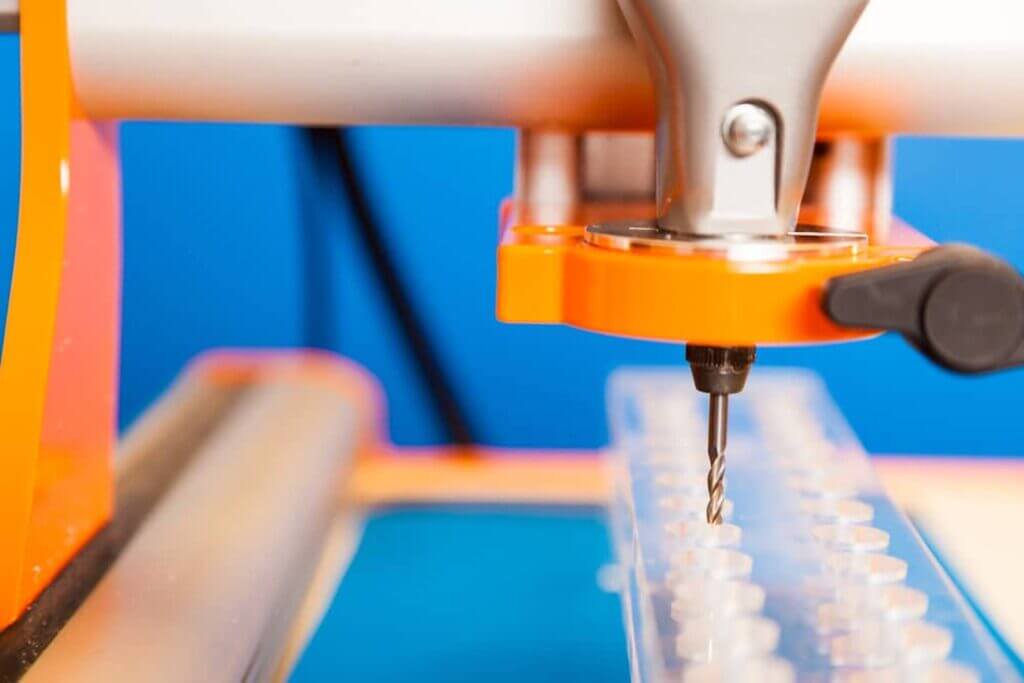
6) Polycarbonate (PC)
Polycarbonate is a thermoplastic polymer. More than one billion kilograms of polycarbonate are produced each year. This is because polycarbonate has excellent physical properties and a wide range of applications.
①Advantages of PC
1.High strength
2.High toughness
3.Can be a transparent thermoplastic
② Disadvantages of PC
1.Scratches easily
2.Not cheap
③Applications
1.Safety glass
2.Bulletproof glass
3.Room dividers
4.Electronics
5.Construction
7) Polypropylene (PP)
Polypropylene, also known as polypropylene, is a thermoplastic polymer with slightly improved performance over polyethylene.
①Advantages of PP
- Cheap price
- High bending strength
- Good chemical resistance
- Moisture resistance
- Repairable
- Low friction coefficient
②Disadvantages of PP
- Flammable
- Difficult to paint
- Degrades under UV light
- High thermal expansion coefficient
③Uses of PP
- Mechanical parts
- Soft packaging
- Hard packaging
- Handbags
- Bottle caps
- Medical equipment
8) Polyphenylene sulfone (PPSU)
Polyphenylene sulfone is an aromatic ring polymer. It is an easy-to-process plastic. It can also be injection molded. It is a high-performance thermoplastic.
① Advantages of PPSU
- Highly impact-resistant
- High temperature resistance
- Sterile material
- High chemical resistance
- Food grade
- Washable
- Durable
② Disadvantages of PPSU
- High tendency to scale
③ Applications
- Water bottles
- Baby bottles
- Aircraft frames
- Sterilization trays
- Medical equipment
9) Polysulfone (PSU)
Polysulfone is another high-performance thermoplastic like PPSU. PSU parts can be used in a wide temperature range. Common temperature range is -100°C to 200°C. This temperature range makes it one of the highest use temperatures among plastics.
① Advantages of PSU
- High thermal stability
- Chemical inertness
- Non-flammable
- High hydrolysis stability
② Disadvantages of PSU
- Not resistant to solvents
- Hydrophobicity
③ Applications
- Wastewater recovery system
- Hemodialysis system
- Gas separation
- Food and beverage equipment
10) Polyphenylene sulfide (PPS)
PPS has many different names due to the many brands that produce it. Some common brand names include Durafide, Petcoal, Ecotran, and Fortron. It is a high-temperature thermoplastic polymer.
① Advantages of PPS
1.High temperature resistance
2.Flowability
3.Chemical corrosion resistance
4.Dimensional stability
5.Good electrical insulation
② Disadvantages of PPS
1.Notch sensitivity
2.Poor tracking resistance
③ Applications
1.Coal-fired boiler filter cloth
2.Film capacitors
3.Gaskets
4.Specialty films
5.Packaging
11) Polyetherimide (PEI) – Ultem
PEI is an amorphous thermoplastic. Its color spectrum ranges from amber to transparent. It is a cheaper alternative to PEEK thermoplastic with similar properties.
① Advantages of PEI
1.Transparency
2.Adhesion properties
② Disadvantages of PEI
1.Low impact resistance
③ Applications
1.3D printer bed
12) Ultra-high molecular weight polyethylene (UHMW)
UHMW is a subtype of thermoplastic polyethylene. It is also known as high modulus polyethylene (HMPE). Since it is a long-chain polymer, it has good load handling capabilities.
① Advantages
- Highest impact strength among all thermoplastics
- High wear resistance
- High toughness
- Odorless
- Non-toxic
② Disadvantages
- Low melting point (about 130°C)
- Creep deformation under long-term stress
③ Uses
- Bearing material
- Idler
- Chain guide
- Mechanical parts
- Gear
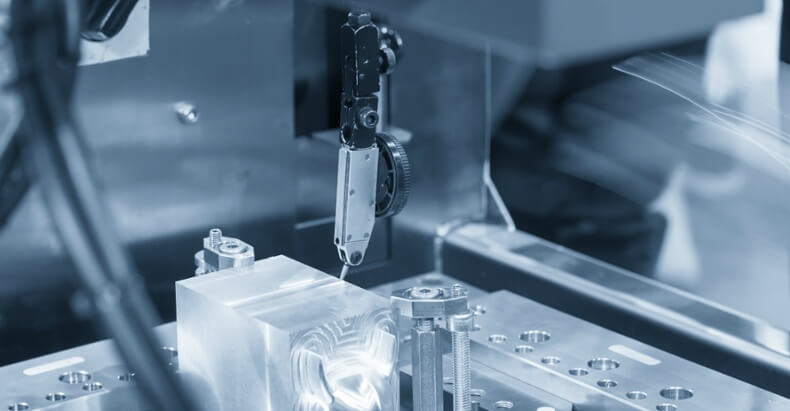
13) Polyoxymethylene (POM or Acetal)
Polyoxymethylene is one of the most commonly used plastics in CNC machining. It also has another name, Delrin. It is a very easy to process plastic.
① Advantages
- It may be visually appealing
- Heat resistance
- Abrasion-resistant surface
- Weather resistance
- Chemical resistance
- Impact resistance
② Disadvantages
- Poor acid resistance
- Difficult to bond
③ Uses
- Seat belt parts
- Electronic cigarettes
- Insulin pens
- Water meters
- Guitar picks
14) Polystyrene (PS or Styrofoam)
Polystyrene is a foam polymer solid. The foam variety is patented and traded under the name Styrofoam. Styrofoam is actually an extruded polystyrene (XPS). DuPont owns the trademark for Styrofoam and produces it worldwide. Styrofoam is 98% air, giving it a foamy nature.
① Advantages
- Lightweight
- Buoyancy
② Disadvantages
- Harmful to the environment
③ Uses
- Building materials
- Insulation boards
- Arts and crafts
15) Acrylonitrile Butadiene Styrene (ABS)
ABS is another popular plastic for CNC machining. It is a thermoplastic polymer. It has a wide range of applications in different industries due to its impressive physical properties.
① Advantages
- Good impact resistance
- Toughness
- High rigidity
- Good stability under load
② Disadvantages
- Low melting point
- Poor response to UV exposure
- Poor weather resistance
③ Uses
- Hard hats
- Helmets
- Vacuum cleaners
- Printers
- Musical instruments
- Kitchenware
16) Carbon fiber (CF)
Carbon fiber is basically carbon fiber reinforced polymer (CFRP). It is a material in which fine carbon fiber bundles are added to a base plastic to improve performance. It is classified as a composite material.
① Advantages
- Extremely strong plastic
- Light
- High rigidity
- High strength-to-weight ratio
② Disadvantages
- Expensive
- Thermal conductivity
- Poor electrical insulation
③ Applications
- Aerospace
- Machine tool spindle
- Robotic arm
- Power transmission shaft
17) Polytetrafluoroethylene (PTFE or Teflon)
Teflon is the brand name of polytetrafluoroethylene. It is patented by Chemours. Interestingly, Teflon was also discovered by DuPont, which already owned the trademark for polystyrene foam. Chemours, which branched out from DuPont, is the global manufacturer of Teflon.
Let’s take a closer look at the details of CNC machining with Teflon.
① Advantages
- Non-stick
- Heat resistance
- Cold resistance
- Coating form
- Long service life
② Disadvantages
- Expensive
- Difficult to mass produce
- Deformation under pressure
- Cannot be welded
③ Applications
- Non-stick pans
- Wear-resistant coating for cars
- Coating for surgical equipment
18) Polymethyl methacrylate (PMMA) or acrylic resin
PMMA has many different names, such as acrylic and acrylic glass. There are many other brand names, such as Lucite, Plexiglass, Perclax, Perspex, etc. Due to its high transparency, acrylic is widely used in machining, replacing traditional glass.
① Advantages
- Shatter resistance
- Optical clarity
- Transparency
- It can be bonded with strong glue.
- Heat welding can be performed.
- Can be mixed with chlorinated solvents.
② Disadvantages
- Easily scratched
- Cannot withstand extremely high temperatures
③ Applications
- Kitchen backsplash
- Glass cabinets
- Home decoration
- Photo frames
- Wall shelves
- Tables
19) Polysiloxane (Silicone)
Polysilicone is a colorless rubber-like substance also known as silicone. It is used in many plastic CNC machining applications in the electronics, household, electrical, automotive and aviation manufacturing industries.
① Advantages
- Anti-wrinkle and wrinkle
- Thermal stability
- Low toxicity
- No microbial growth
- Waterproof
② Disadvantages
- Poor tear strength
- Poor abrasion resistance
③ Applications
- Lubricant
- Sealant
- Adhesive
- Heat insulation
- Electrical insulation
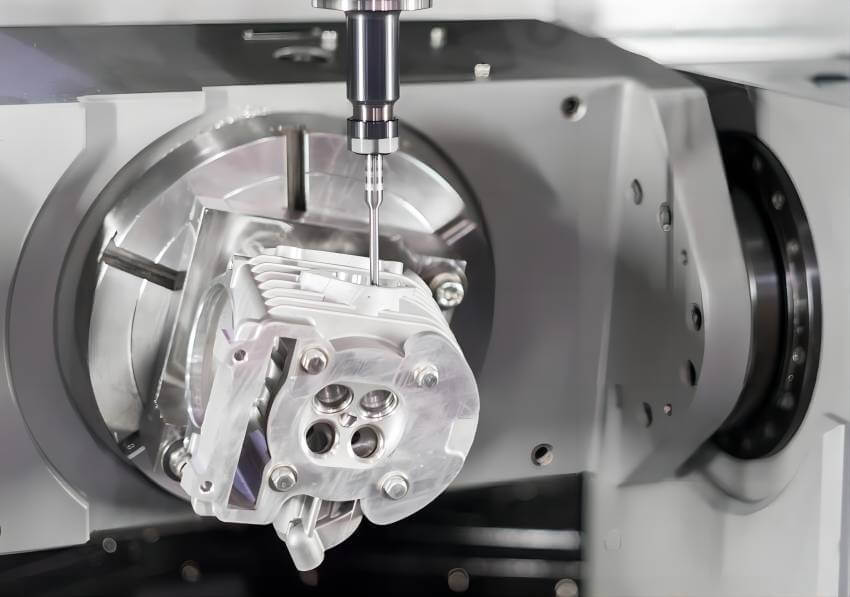
20) Poly(p-phenylene terephthalamide) (Kevlar)
Poly(p-phenylene terephthalamide), commonly known as Kevlar and Twaron, is one of the most popular aromatic polyamides in the world. It is a synthetic fiber developed by DuPont, and its physical properties are comparable to or even better than those of metals and alloys.
① Advantages
- Extremely high strength
- High impact resistance
② Disadvantages
- Hygroscopicity
- Poor compression resistance
- Expensive
③ Applications
- Racing tires
- Bicycle tires
- Bulletproof vests
- Armor
21) Acetal copolymer (Celcon)
Celcon is a high-performance acetal polymer that operates over a wide temperature range. It resists most harsh conditions and has a long service life. Celcon has many subtypes, such as UV resistance, abrasion resistance, glass reinforcement, bleaching resistance, impact resistance, etc.
① Advantages
- Moisture resistance
- Fuel resistance
- Excellent chemical resistance
- Good dimensional stability
- Long-term fatigue resistance
② Disadvantages
- A certain degree of toxicity
③ Applications
- Fuel system
- Pipeline applications
- Gears
- Springs
- Clips
22) Polyphenylene oxide (PPO)
PPO is a high-temperature thermoplastic. It is a difficult material to manufacture. Therefore, it is usually used in mixed form. It is also called polyphenylene ether (PPE). It has quite good performance characteristics. It is mixed with polystyrene to improve its physical properties.
① Advantages
- High-performance plastics
- Good temperature handling
- Radiation resistance
- Low moisture absorption
- Good dimensional stability
- Chemical corrosion resistance
- High wear resistance
② Disadvantages
- Expensive
- Difficult to manufacture
③ Uses
- Electronic products
- Structural parts
- Sterilized equipment in healthcare
- Automotive parts
23) Polyimide
Kapton is a special type of polyamide film. DuPont invented this film. It has the best temperature handling performance of all plastics. It can withstand temperatures between -269°C and 400°C.
① Advantages
- Extreme temperature handling
- Good mechanical properties
- Retains shape at high temperatures
② Disadvantages
- Susceptible to radiation damage
- Mechanical properties deteriorate with aging
③ Applications
- Space blankets
- Flexible printed circuit boards (PCBs)
- 3D printing
- Space applications
24) Polyethersulfone (PES)
PES plastics are available in blocks, sheets, and rods. Sometimes referred to as PESU. These plastics have good physical properties and temperature handling capabilities. PES is reddish brown in color and has high transparency.
① Advantages
- Good dimensional stability
- Good temperature handling
- Withstands high temperatures for long periods of time
- High mechanical strength
- Rigidity
- Hydrolysis resistance
② Disadvantages
- Rough surface
- Hydrophobicity
- Membrane fouling
③ Applications
- Dialysis membranes
- Surgical operating room star
- Infusion equipment
- Sterilization boxes
25) Polyvinylidene fluoride (PVDF)
PVDF is a chemically inert thermoplastic. It is a specialty plastic used in very niche applications. The main use of this plastic is when a highly non-reactive material is required. PVDF is resistant to any chemical. It is available in a variety of different forms, such as tubes, sheets, powders, pipes, plates, and films.
① Advantages
- Weldable
- High chemical inertness
- Will not be degraded by acids
- Solvent resistant
- Non-toxic within temperature limits
② Disadvantages
- High dissipation factor
- Scaling
③ Applications
- Defense equipment
- Chemical industry
- Semiconductor manufacturing
- 3D printer filament
- High gloss metallic paint
26) Thermoplastic elastomer (TPE)
TPE is sometimes called thermoplastic rubber. It is a mixture of different polymers, usually plastic and rubber. TPE is different from traditional elastomers, which are thermosetting in nature. However, the thermoplastic properties of TPE allow many different manufacturing methods to be applied.
① Advantages
- Good elongation
- Return to original shape after elongation
- Long service life
- Higher physical range than other plastics
② Disadvantages
- Below average heat resistance
- Significant decrease in physical properties when temperature rises
③ Applications
- Cables and wires
- Toys
- Automotive parts
- Shoes
- Sports equipment
- Consumer goods
27) Thermoplastic polyurethane (TPU)
TPU is a large class of polyurethane (PU). It can exhibit a range of different properties. It is easily processed by CNC, extrusion and injection molding. It can also be calendered. Due to the wide range of manufacturing processes, TPU waste can be recycled repeatedly.
① Advantages
- Easy to process
- Wide range of manufacturing processes
- Recyclable
- Elasticity
- Transparency
- Oil-resistant
- Grease-resistant
- Abrasion-resistant
② Disadvantages
- Some types have a short shelf life
- Not cost-effective
③ Applications
- 3D printer filaments
- Car dashboards
- Power tools
- Sports equipment
- Casters
- Footwear
- Inflatable rafts
- Fire hoses
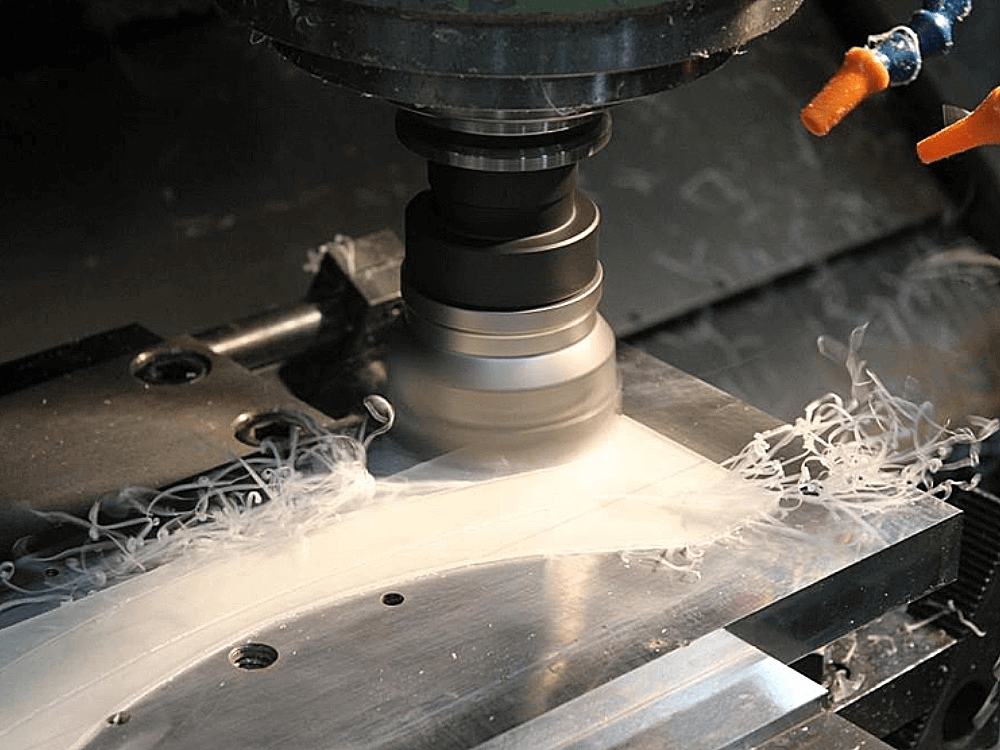
28) Polyetheretherketone (PEEK)
PEEK is a very popular thermoplastic for CNC machining. It is colorless in its pure state. It has a melting point of 343 °C, making it ideal for high-temperature applications. Many PEEK subtypes can easily reach operating temperatures of 250 °C.
① Advantages
- Resistant to thermal degradation
- Good operating temperature
- Resistant to chemical corrosion
- Good mechanical properties
② Disadvantages
- Expensive
- Degrades under UV light
- Does not biodegrade
③ Uses
- Water pumps
- Aerospace parts
- Medical implants
- Bearings
4.Which CNC machining process is best for plastics?
All CNC processes are suitable for plastic CNC machining. CNC milling machines and lathes are the most common machines used for these materials. Other processes such as CNC drills and water jet cutting machines also provide good results for plastic machining.
5.Applications of Plastic CNC Machining
There are many use cases for machining plastic materials using CNC. Some of these applications include:
1) Automotive Industry
Plastics are used to manufacture many different parts in the automotive sector. Interior parts such as linings, handles, and dashboards are all plastic. Even exterior parts such as bumpers use plastic. Other miscellaneous plastic parts include engine covers, electronic housings, etc.
2) Oil and Gas Industry
The chemical resistance of plastics has a wide range of applications in the oil and gas industry. Plastics can be made into seals and containers for oil extraction and storage. Electrical connectors in heavy mining machinery are also made of plastic.
3) Food Processing
Plastics are widely used as primary and secondary packaging materials in the food processing industry. Food-grade plastic containers are CNC machined to provide a safe storage option. CNC-made plastic pallets provide an impact-resistant transportation option for food.
4) Agricultural Industry
Plastics are widely used in the agricultural sector for a variety of equipment. They are used to make irrigation and drainage solutions. Plastics are used to make pillars and nets. Agricultural components such as greenhouses, planter boxes, and tools are also increasingly using plastics.
5) Aerospace
Many plastics have high impact and corrosion resistance. This makes them ideal for making components that are subjected to extreme pressures, such as valves and pumps. Plastics such as thermoset polyimides are also used to make structural components in the aerospace sector.
6) Healthcare Industry
CNC machined plastics are used to make implants and many other devices. Electronic housings for medical devices such as pacemakers and vital signs monitors are made from high-grade plastics. Many plastics have a wear-resistant surface and resistance to stress cracking. This is why they are suitable for manufacturing implants.
7) Electrical and Electronic Products
The housings of electrical appliances such as televisions, laptops, and smartphones are made from plastics that are machined by CNC. These CNC machines are very precise and provide consistent results required in this field.
6.How to Choose the Right Plastic for Your CNC Project?
No matter what product you are producing, there are many different plastics to choose from. When choosing a plastic, you should evaluate various parameters that influence your decision.
Some of these factors include:
- Hardness and Strength: Hardness and strength are the primary considerations when choosing a plastic. The plastic should be strong enough to withstand the weight and impact of the specific application of the part.
- Chemical Resistance: Chemical resistance is very important when the plastic is subjected to harsh conditions.
- Moisture Resistance: Moisture resistance is a parameter of plastics in high humidity environments. Moisture-resistant plastics are also required for outdoor applications.
- Appearance: The appearance of the plastic is important when an aesthetically pleasing part is required. This is crucial for use cases such as toys. Sometimes, when visibility is required, transparent thermoplastics are used.
- Heat resistance: Heat resistance of plastics is important for outdoor applications, thermal applications, and even electrical insulators.
- Budget: Budgets for plastics range widely. Materials such as polyethylene and nylon can be very cheap. Meanwhile, high-strength plastic composites can be expensive.
7.Summary
When quality and precision are important, CNC plastic machining is the process of choice for plastic materials. Injection molding has major drawbacks in terms of consistency and precision. Furthermore, additive manufacturing technology only works with plastics that can be thermoformed.
